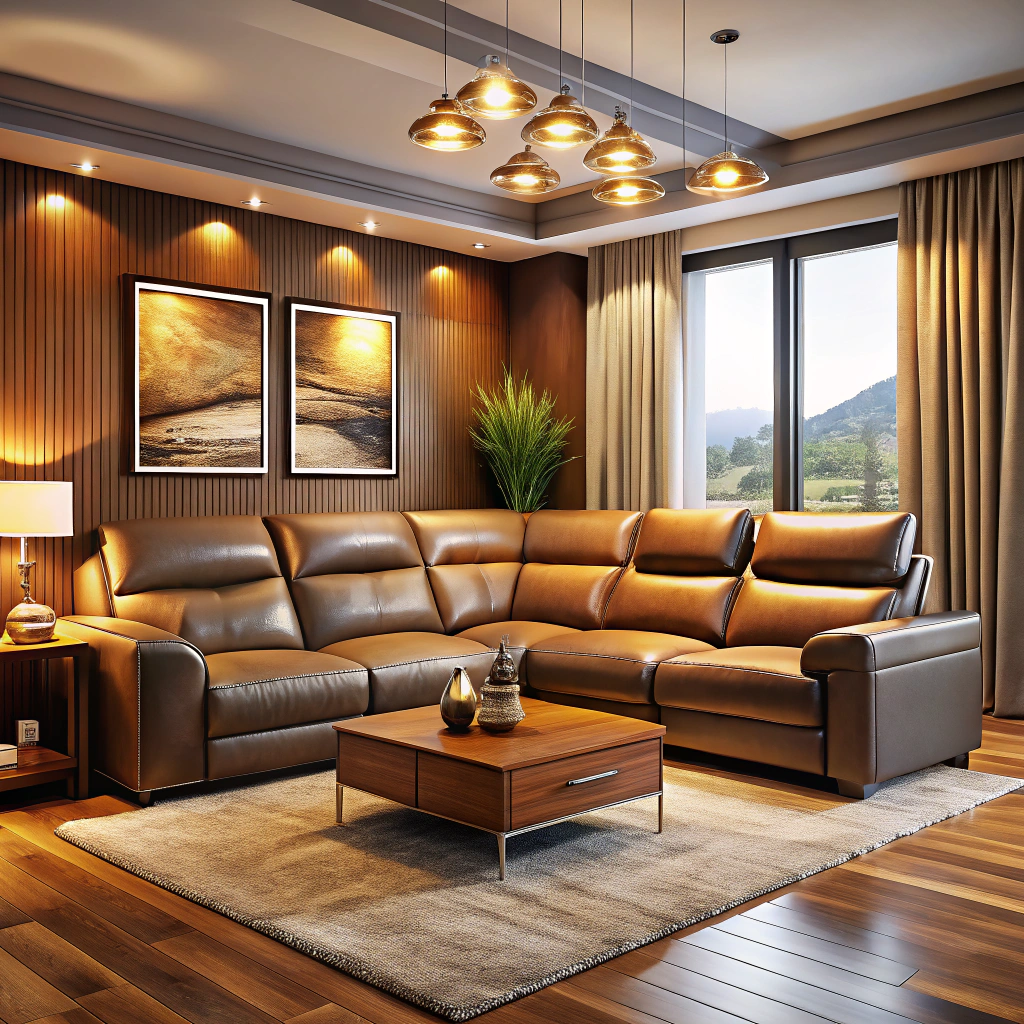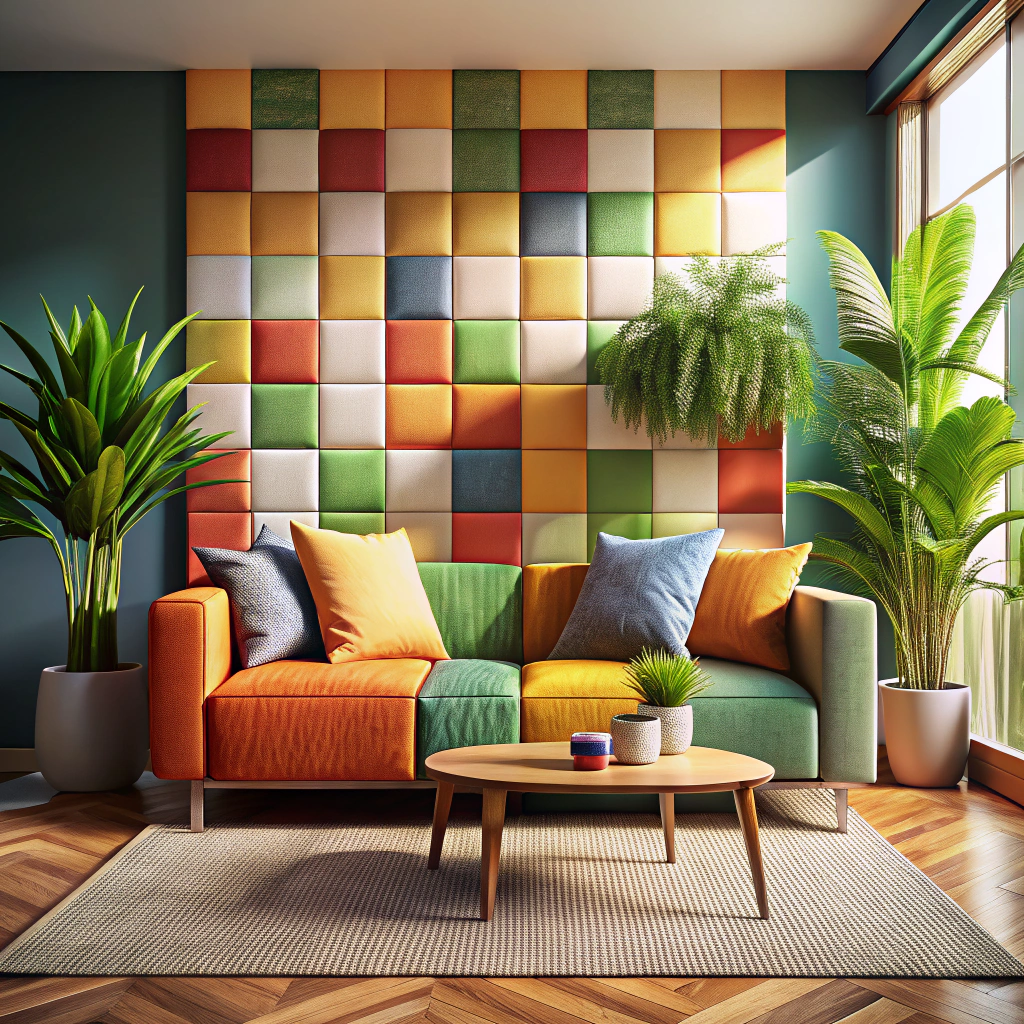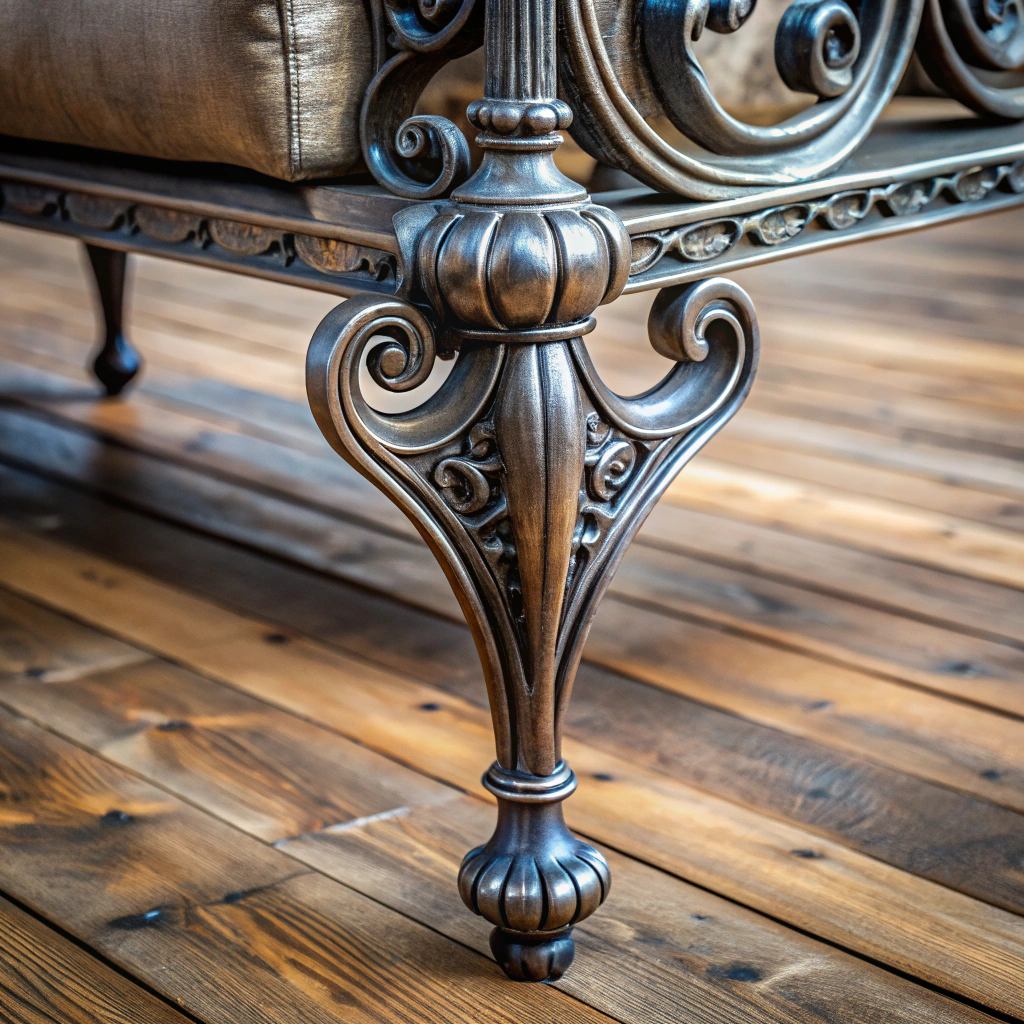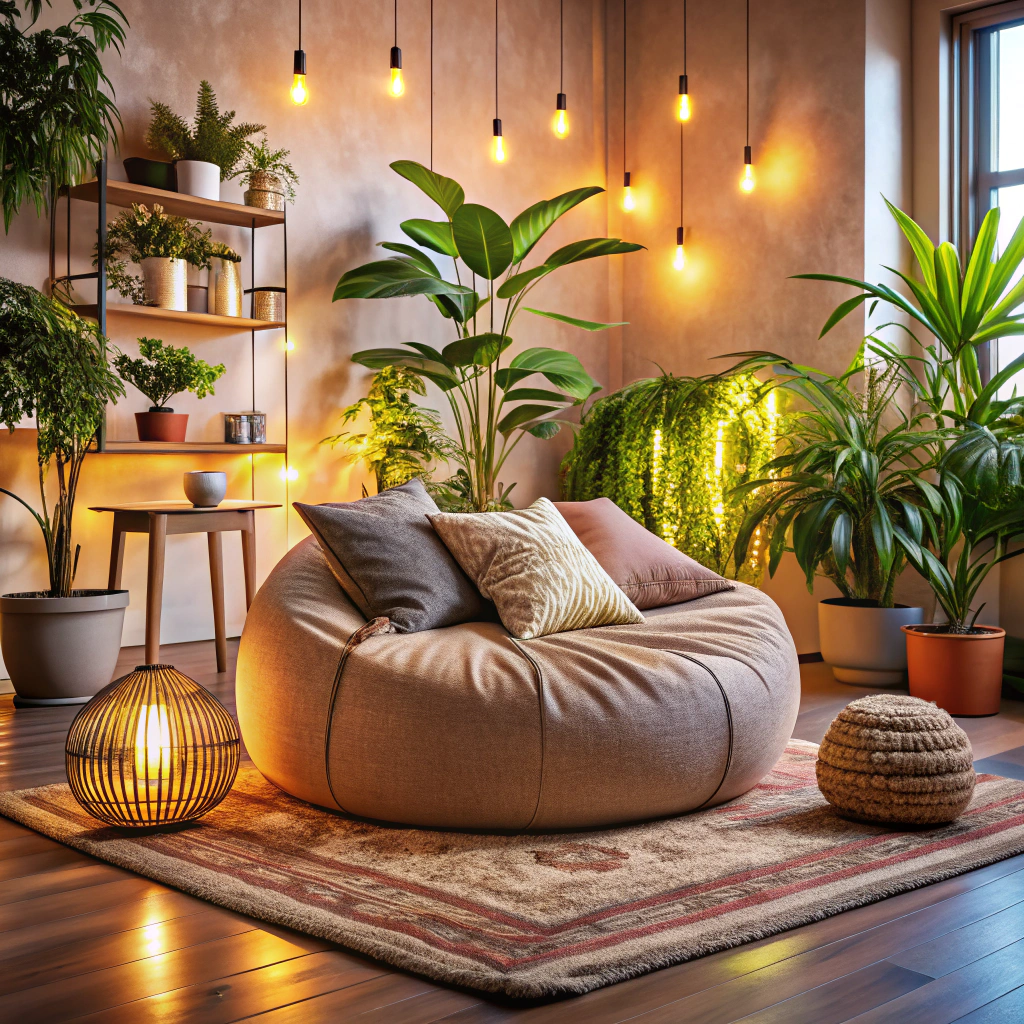Last updated on
Discover the perfect couch color to complement your beige walls, creating a harmonious and stylish living space you’ll love.
Beige walls are a popular choice for many homeowners due to their neutral and versatile nature. However, when it comes to choosing a couch color that complements beige walls, it can be challenging to know where to start.
The right couch color can enhance the overall aesthetic of your living room and tie everything together seamlessly. In this article, we’ll explore some of the best colors that go with beige walls so you can make an informed decision for your home decor.
Table of Contents
Warm Beige Vs Cool Beige
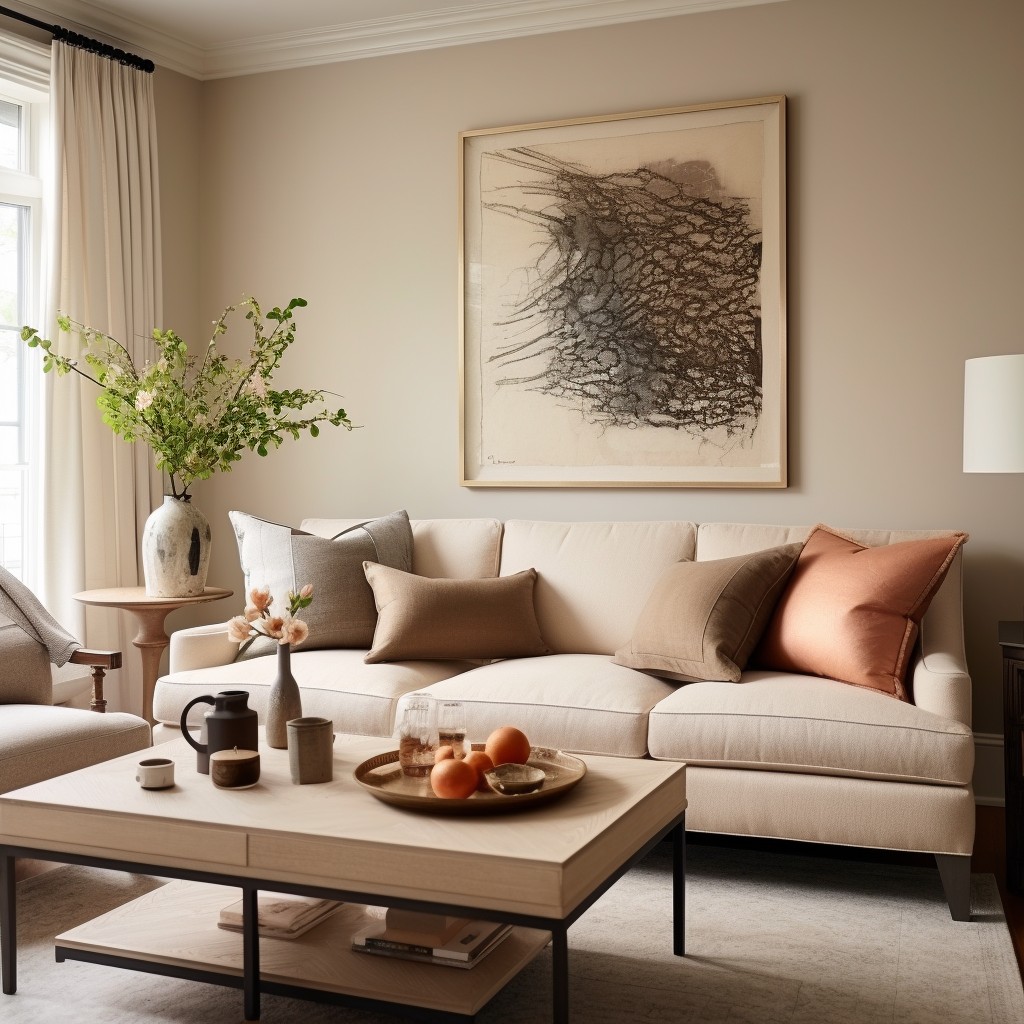
Warm beiges have a yellow or red undertone, while cool beiges have a gray or blue undertone. It’s essential to determine which category your beige falls into before selecting the perfect couch color.
If you’re unsure whether your beige is warm or cool-toned, take note of the other colors in the room. If you’ve decorated with warmer hues like reds and oranges, chances are your walls fall under the warm category.
On the other hand, if cooler tones such as blues and greens dominate in decor elements like curtains or rugs – then it’s likely that you have cooler toned-beige walls.
Neutral Palette Couches
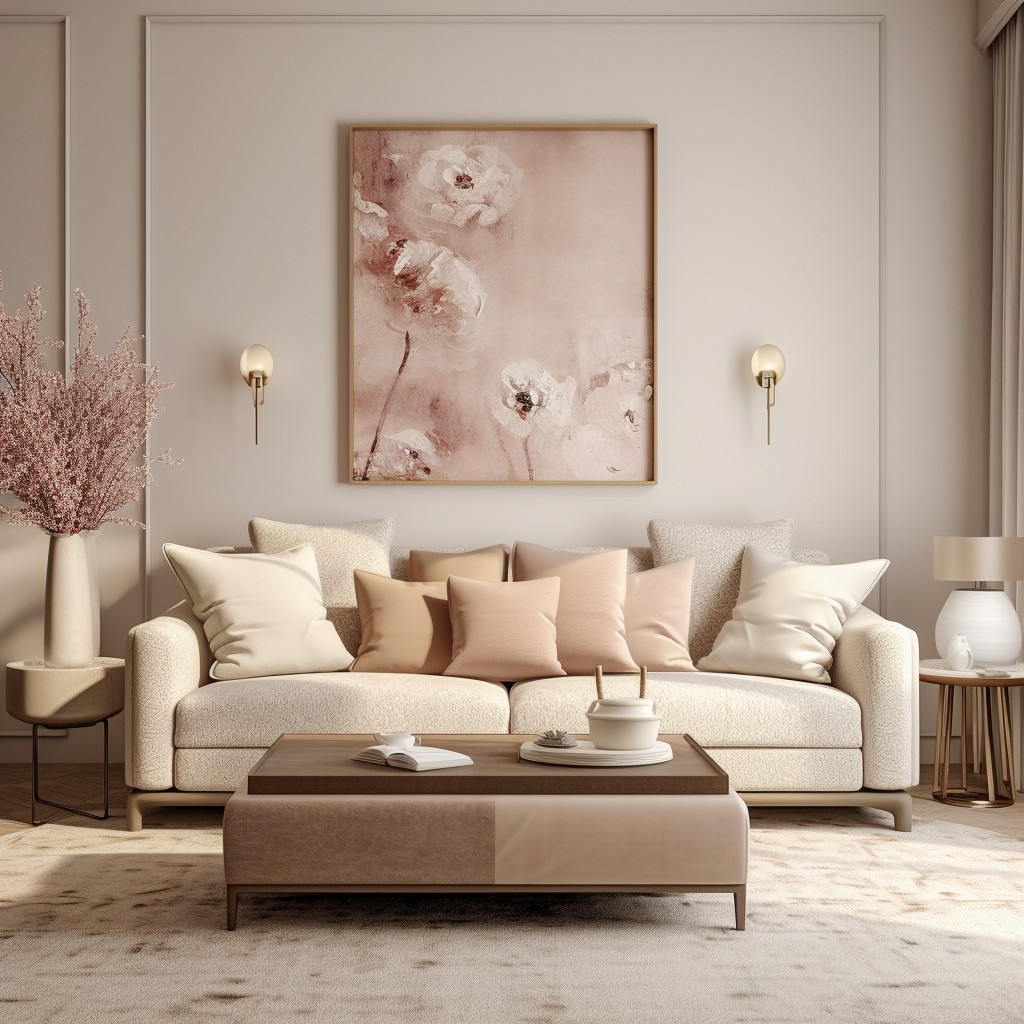
These couches come in various shades of beige, gray, white, and black that can complement your beige walls perfectly. Neutral-colored sofas provide an excellent backdrop for accent pillows or throws in bold colors or patterns that add interest to the room without overwhelming it.
When choosing a neutral sofa color, consider the other elements in your living room such as curtains, rugs or carpets and wall art. If you have dark wood floors with beige walls then opt for lighter colored furniture like cream-colored sofas which will help balance out the darker tones of the floor while still blending well with your wall color.
Another advantage of neutral palette couches is their versatility when it comes to decorating styles – they work well with both traditional and modern decor schemes alike! Whether you prefer minimalist design aesthetics or cozy farmhouse vibes; there’s always a way to incorporate these timeless pieces into any home decor style.
Earth Tone Sofa Options
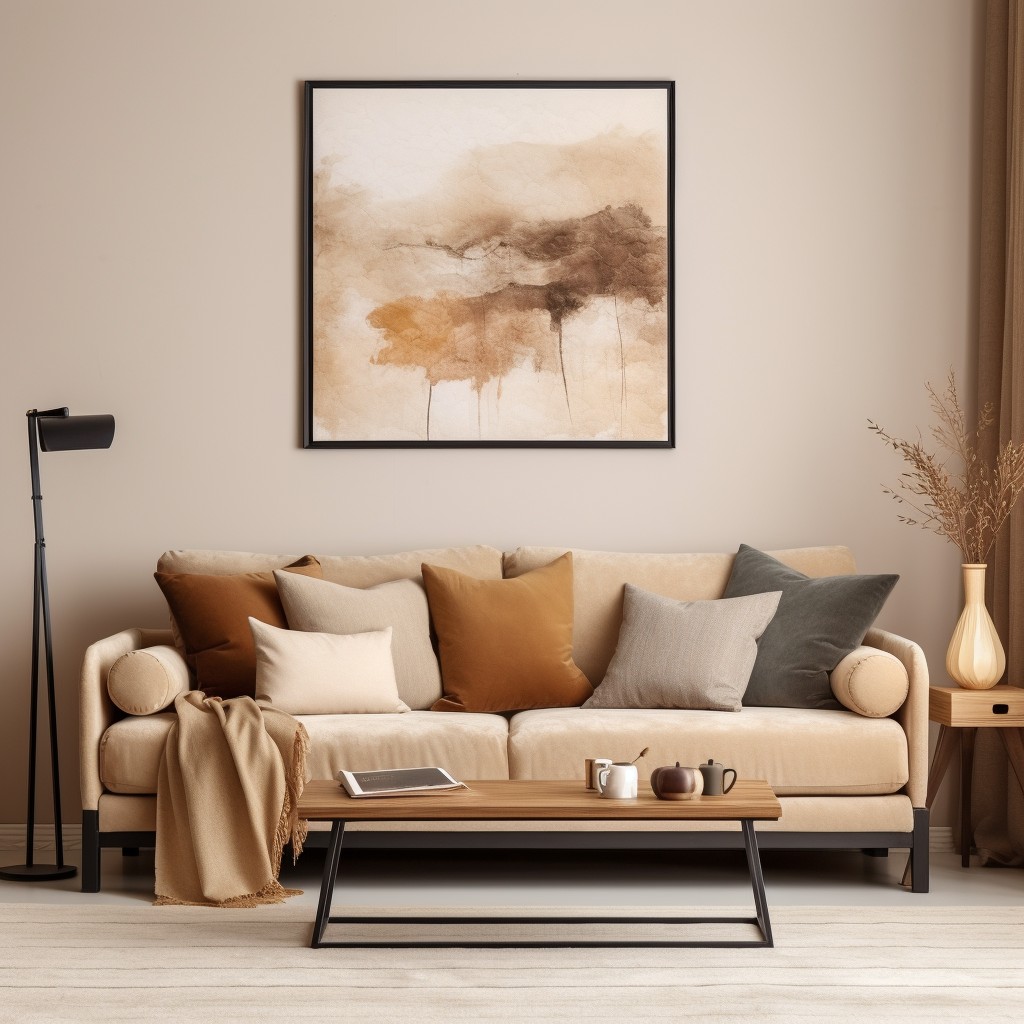
Earthy hues like brown, tan, and olive green create a warm and inviting atmosphere in your living room. These colors work well with the natural tones of beige walls while adding depth and texture to your space.
A brown leather couch is a classic choice for any living room with beige walls. It adds warmth and richness to the space while providing durability that will last for years.
If you prefer fabric sofas over leather ones, consider options in shades of taupe or sandstone.
Olive green is another popular earth tone color that pairs beautifully with beige walls. This muted shade creates a calming effect on the eyes while still making an impact on your decor scheme.
If you’re looking for something more unique than traditional earthy hues, consider rust-colored sofas or even mustard yellow seating options as they can add pops of unexpected color without clashing against neutral wall colors like beige.
Pastel Colored Seating
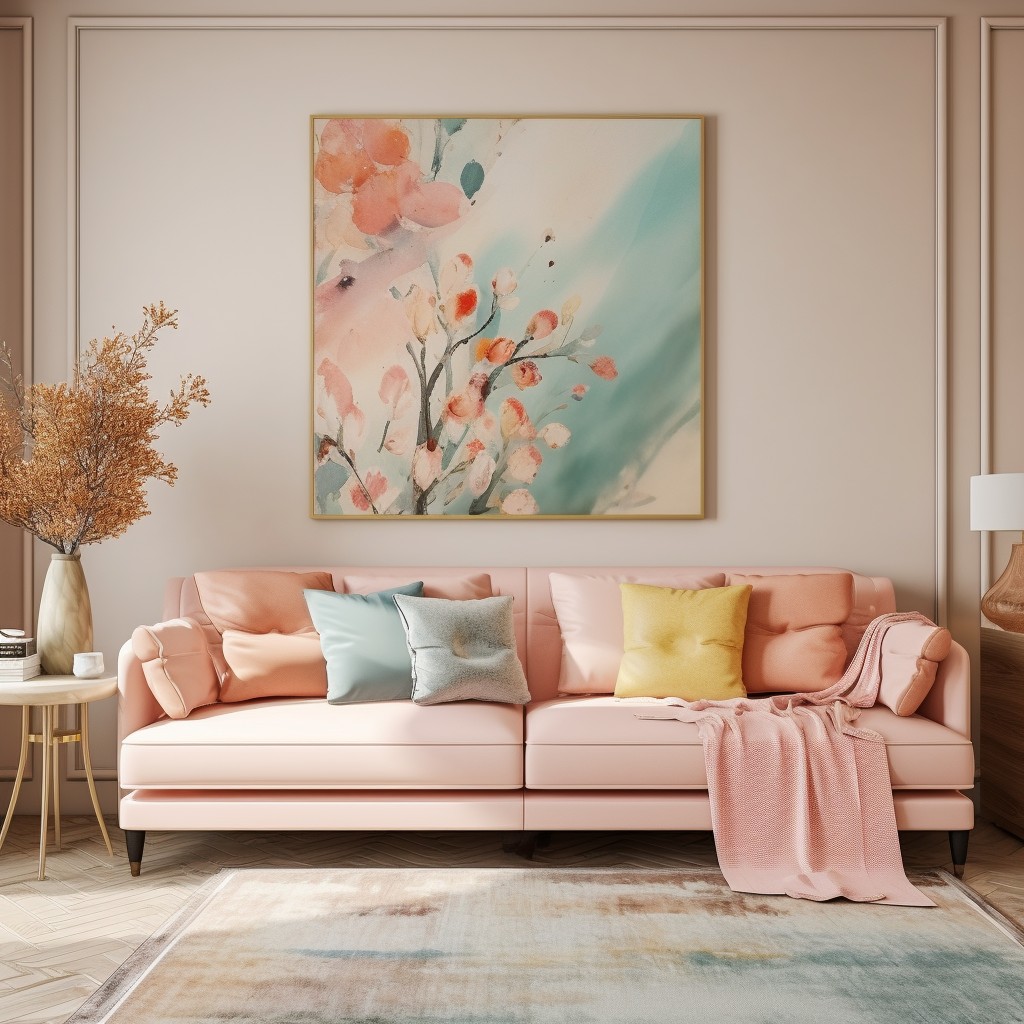
Pastels are soft, muted colors that can create a calming and relaxing atmosphere in your home. When paired with beige walls, pastel-colored couches can provide just the right amount of contrast and visual interest.
Some popular pastel shades include light pink, baby blue, lavender, mint green or pale yellow. These hues work well with beige walls because they complement each other’s warm tones while still providing enough contrast to make your furniture stand out.
When choosing a pastel-colored sofa or armchair for your living room with beige walls consider pairing it up with neutral colored throw pillows or blankets that match the wall color scheme as this will help balance out any boldness from the seating choice.
Bold and Vibrant Sofas
A bright red or blue couch can create an eye-catching focal point in the room while still complementing beige walls. However, it’s important not to go overboard with too many bright colors as this can overwhelm the space.
Instead, choose one or two accent colors that work well together and incorporate them into your decor through throw pillows or other accessories.
When selecting a bold-colored sofa for your beige-walled living room, keep in mind that it should be balanced out by neutral elements such as white curtains or light-colored rugs. This will prevent the space from feeling too busy while still allowing the colorful couch to stand out.
Some popular options for bold sofas include jewel tones like emerald green and sapphire blue as well as warm hues like burnt orange and mustard yellow. These colors are perfect for creating a cozy atmosphere during colder months but also work well year-round when paired with lighter accents.
Patterned Couch Designs
When paired with beige walls, patterned sofas can create a striking contrast that elevates the overall look of the space. However, it’s important to choose patterns that complement rather than clash with your existing decor.
If you’re looking for subtle patterns, consider options like pinstripes or herringbone. These classic designs are timeless and versatile enough to work in any style of living room.
For those who prefer bolder patterns, there are plenty of options available as well. Floral prints or geometric shapes can make a statement without overwhelming the space when used in moderation.
When choosing a patterned couch design for your beige-walled living room, keep other elements such as curtains and rugs in mind so everything works together harmoniously.
Material Considerations
The right fabric or leather can make all the difference in creating a cohesive and stylish living space. For example, if you have pets or children, you may want to consider a durable and easy-to-clean material such as microfiber or leather.
On the other hand, if comfort is your top priority, plush velvet or chenille might be more suitable options.
In addition to practicality and comfort factors when selecting materials for your sofa that will complement beige walls; texture also plays an essential role in adding depth and interest to any room design. A textured fabric like linen adds dimension while still maintaining neutrality with its natural tones of white-beige-grey-brown-black colors.
Balancing Room Elements
Balancing these elements is crucial for creating a cohesive and visually appealing space. One way to achieve balance is by incorporating accent colors that tie everything together.
For example, if you have beige walls and a neutral-colored couch, adding pops of color through throw pillows or curtains can add interest without overwhelming the space.
Another consideration when balancing room elements is furniture placement. If you have large windows or artwork on one wall, placing your couch opposite them can create symmetry and balance in the room.
It’s also important not to overcrowd your living area with too much furniture as this can make it feel cluttered and uninviting. Instead, opt for pieces that serve multiple functions such as an ottoman with storage or side tables that double as seating.
Accent Colors and Decor
Adding pops of color through decorative pillows, curtains, or artwork can bring life to an otherwise neutral space. Consider using complementary colors such as blue or green for a calming effect or warm tones like orange and red for a cozy atmosphere.
Another way to incorporate accent colors is by choosing furniture pieces that have bold hues. A bright yellow armchair or an emerald green ottoman can add personality and interest to your living room while still complementing the beige walls.
In addition to color accents, consider incorporating different textures into your decor scheme. A plush rug in a contrasting shade will create depth in the room while also providing comfort underfoot.
Mixing materials like wood and metal will add visual interest without overwhelming the space.
Mixing Furniture Styles
Combining different styles of furniture creates an eclectic look that is both unique and visually appealing. However, it’s essential to strike a balance between contrasting elements so that they complement each other rather than clash.
One way to mix furniture styles successfully is by choosing pieces with similar colors or materials. For example, if you have a beige sofa in your living room, consider pairing it with wooden chairs or tables for warmth and texture.
Another approach is by using statement pieces as focal points in the room while keeping everything else simple. A bold-colored armchair or patterned rug can be eye-catching without overwhelming the rest of the decor.
Remember also that mixing too many different styles at once can create chaos instead of harmony; therefore, choose two or three complementary design aesthetics for your space.
Seasonal Color Schemes
This approach involves changing the colors of your decor and furniture according to the season. For example, in spring and summer, you can incorporate bright and bold hues such as yellow or green into your couch cushions or throw pillows.
In fall and winter, warmer tones like burgundy or navy blue can create a cozy atmosphere.
If you have beige walls that serve as a neutral backdrop for any color scheme throughout the year, then switching up accent colors with each season is an easy way to refresh your space without having to make major changes.
Remember that seasonal color schemes don’t necessarily mean completely swapping out all of your decor every few months; small touches like new curtains or decorative accents on shelves can go a long way in creating an updated look for each season while still maintaining consistency with beige walls.
Lighting and Its Effects
The right lighting can enhance the colors and textures of your furniture, while poor lighting can make even the most stylish decor look dull and uninviting. When it comes to beige walls, natural light is always an excellent choice as it brings out their warm undertones.
However, if you don’t have access to ample natural light or want to create a cozy atmosphere during evenings or cloudy days, consider adding artificial lights such as floor lamps or table lamps with soft white bulbs that mimic daylight.
Another option is installing dimmer switches on overhead lights so you can adjust them according to different times of day and activities like movie nights or reading sessions. Accent lighting such as wall sconces placed strategically around artwork or decorative elements in your living room will add depth and dimensionality while highlighting specific areas.
12 Best Couch Colors for Beige Walls
Neutral palette couches such as white, cream or gray can create a clean and sophisticated look in your living room. Earth tone sofa options like brown or tan can add warmth and depth to the space while still maintaining a neutral feel.
If you’re looking for something more colorful, pastel-colored seating is an excellent choice. Soft pinks, blues or greens can add subtle pops of color without overwhelming the room’s overall aesthetic.
For those who want to make a bold statement with their furniture choices, vibrant sofas in shades of reds and oranges are sure to catch attention. Patterned couch designs featuring geometric shapes or floral prints also provide an eye-catching focal point in any living space.
Decorating a Beige Living Room
When working with a neutral palette like beige, it’s essential to add pops of color and texture throughout the space. One way to do this is by incorporating accent pillows or throws in bold hues or eye-catching patterns.
Another option is adding decorative elements such as artwork, vases, or candles that bring in complementary colors and textures. For example, if you chose a navy blue couch for your beige walls, consider adding gold accents throughout the room for an elegant touch.
When selecting furniture pieces beyond just the sofa itself – such as coffee tables and side chairs – keep in mind that they should also complement both the wall color and sofa hue. Opting for natural materials like wood can help create warmth while still keeping things neutral.
Styling a Couch in a Room With Beige Walls
One important factor to consider is the placement of your couch within the space. If you have a large living room with plenty of natural light, consider positioning your sofa in front of or facing a window for an inviting and cozy feel.
Another key element when styling a couch in a room with beige walls is incorporating accent colors and decor pieces that tie everything together seamlessly. Consider adding throw pillows or blankets in complementary shades such as navy blue, forest green, or burnt orange for added depth and visual interest.
When choosing additional furniture pieces such as coffee tables or side tables, opt for materials like wood or metal that add texture without overwhelming the space. And don’t forget about lighting! A well-placed floor lamp can create ambiance while also highlighting specific areas within the room.
Are Beige and Cream the Same Color?
They are not the same color. Beige is a light brown color with yellow undertones while cream is a pale yellowish-white hue that has warm undertones of red or pink.
It’s important to understand the difference between these two colors when choosing furniture for your living room. If you have beige walls, pairing them with a couch in a similar shade can create an overly monochromatic look that lacks contrast and depth.
On the other hand, if you opt for cream-colored seating against beige walls, it will add warmth and dimension without being too overwhelming or starkly contrasting.
Ultimately whether you choose beige or cream depends on your personal preference as well as other factors such as lighting conditions in your space and existing decor elements like rugs or curtains.
Decorating the Rest of the Room
One way to create a cohesive look is by incorporating accent colors that tie in with your couch and wall colors. For example, if you chose a navy blue sofa, consider adding throw pillows or curtains in shades of blue or white for a fresh and airy feel.
Another important aspect of decorating around your new couch is considering furniture placement. Be sure not to overcrowd the space with too many pieces – instead opt for functional items like side tables or ottomans that can double as storage while still looking stylish.
Lighting also plays an essential role in creating ambiance within any living space. Consider installing dimmer switches on overhead lights so you can adjust brightness levels according to mood and occasion.
Don’t forget about adding personal touches through decor items such as artwork, family photos or plants which will add warmth and personality into any room design scheme.
FAQ
What colors look best with beige walls?
Beige walls look best with colors such as rust, pink, red, grey, black, or yellow, as these colors complement the warm, neutral hue with a brown undertone.
Does a beige couch go with beige walls?
Yes, a beige couch goes well with beige walls when you add depth by incorporating varied materials and crisp white accents.
What color couch goes well with tan walls?
Dark, dominant furniture colors such as black, rust, or greige, as well as bold accent colors like teal and purple, and classical colors like red, gray, and navy all go well with tan walls.
Does grey furniture go with beige walls?
Yes, grey furniture goes well with beige walls.
How do different shades of beige walls affect the choice of couch color?
Various shades of beige walls influence the choice of couch color by encouraging the selection of complementary, contrasting, or monochromatic tones to create visual interest and balance in the space.
What patterns or textures can enhance the look of a beige-walled living room?
Patterns or textures that can enhance the look of a beige-walled living room include bold geometrics, raised/embossed designs, and nubby or woven fabrics.
How can accent colors be used with a couch to complement beige walls?
Accent colors can be used with a couch to complement beige walls by incorporating decorative pillows, throws, and area rugs in contrasting or complementary shades, enhancing the overall room aesthetic.
